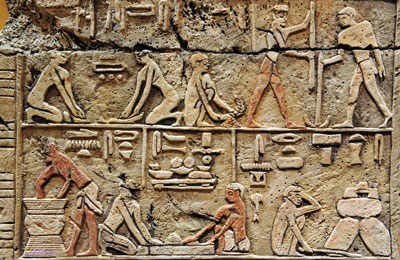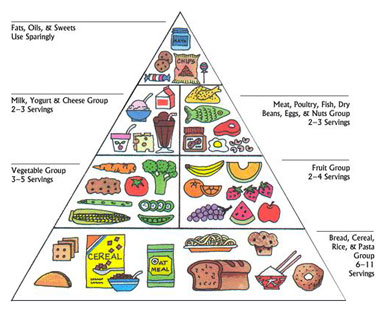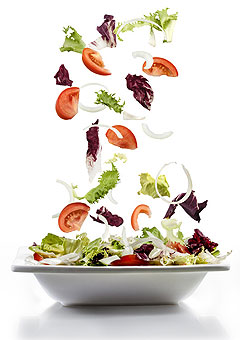As touched on in my first Journal post on Nutrition, it goes without saying that as the green plant needs the sun for energy production, we humans need food and water. We have learned that if we eat too much, we get fat and if we eat the wrong kinds of food, we succumb to disease. It is important, therefore to give considerable thought to what constitutes healthy choices for our food.
We are descended from ancestors who had to hunt wild and dangerous animals for their food, then gather plants and berries from the wild. We have had passed down to us, without much change in the basic biology, the same bodies with (essentially) the same energy requirements. The practice of growing crops (agriculture) did not begin to gain popular usage until around the Stone Age, perhaps 12,000 years ago. In the Americas people relied on hunting and gathering until relatively recently; 2000 year BC. Sedentary village life based on farming did not develop until the second millennium BC. Today we neither hunt nor (for the most part) gather. Almost all of us have become sedentary. The amount of exercise we get is generally not close to enough; the very nature of our food has changed dramatically and food overabundance has supplanted food shortages.

Since the early years of the 20th century there has been a dramatic increase in the prevalence of obesity in western civilization. Looking at numbers from North America we see now that about 65% of adults are either overweight or obese. What’s perhaps more worrisome than that statistic is the recent trend in child and adolescent obesity. One of the consequences of this latter development is that now we are seeing Type II diabetes being diagnosed in children and teens.

What are the generally accepted food recommendations available today?
The available choices of recommendations from “Diet Guru’s”, popular books on Diet and Eating and the Internet are confusing, to say the least. Popular names like the “South Beach Diet”, “Atkins Diet”, “Eat Right for your Type” and others don’t bring any clarity either.
So, what about the American Heart Association, the United States Department of Agriculture and the Canadian Food Guidelines? The Food Pyramid below shows what these guidelines recommend.

The American Heart Association based its thinking on research done in the mid 1900’s (and later) which drew what appeared to be a clear correlation between cholesterol, dietary fat and the growing prevalence of heart disease. Their recommendations have not resulted in any reversal of the North American Obesity Epidemic and researchers more recently have been re-examing the studies, doing more research and finally, questioning the American Heart Association’s conclusions.
When researchers re-examined the data used to prove the hypothesis that cholesterol in the diet and the development of heart disease are inextricably linked they found gaps in the earlier research and flaws in the researcher’s conclusions. They found that certain countries had much lower rates of heart disease and arrived at a “new” theory of heart disease. The real culprit would seem to be sugar. High blood sugars promote an increased output of insulin from the pancreas with subsequent development of insulin resistance, arterial wall inflammatory response and artery clogging. This leads to development of, yes, heart disease. A new Food Pyramid was proposed by Harvard Medical School Chairman, Dr. Walter C. Willett. He discusses this in his book entitled “Eat, Drink and Be Healthy”.

 This information and research brings me now to recommend what you need to be eating going forward to improved Wellness. Those countries that border on the Mediterranean Sea have significantly lower rates of heart disease and diabetes. We are talking about the Mediterranean Diet.
This information and research brings me now to recommend what you need to be eating going forward to improved Wellness. Those countries that border on the Mediterranean Sea have significantly lower rates of heart disease and diabetes. We are talking about the Mediterranean Diet.
I would add on one further recommendation; if you need to lose weight, lower your BMI and improve your Waist to Hip Ratio, combine the Mediterranean Diet with adherence, also, to consumption of only low GI (and some medium GI) carbohydrates. I have provided some further reading below as a sample of what is available.
Ask a Question?
I will be happy to answer any questions that you may have, related to this Journal article. I will post my answers to the 10 most frequently asked questions on the website.
For More Information
See: Nutrition – Recommended Reading & Links
Please take a moment to Subscribe to my free Health & Wellness Newsletter to receive monthly updates and exclusive content for members.
